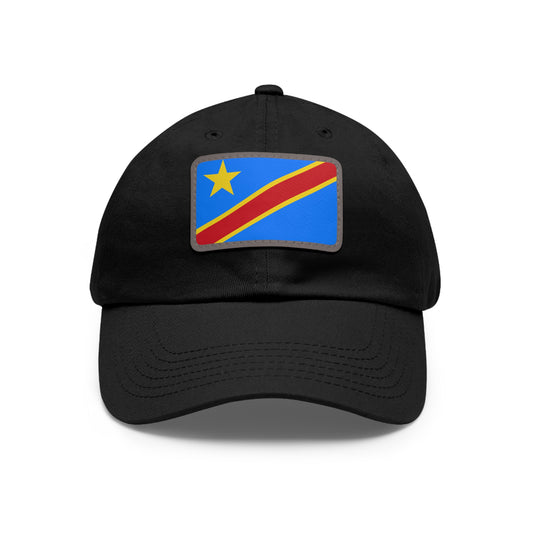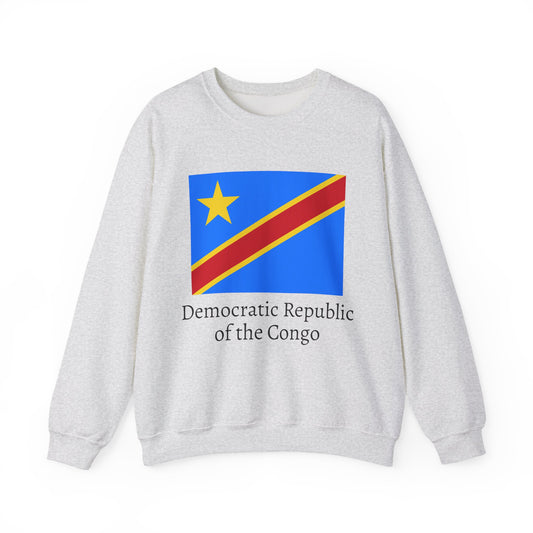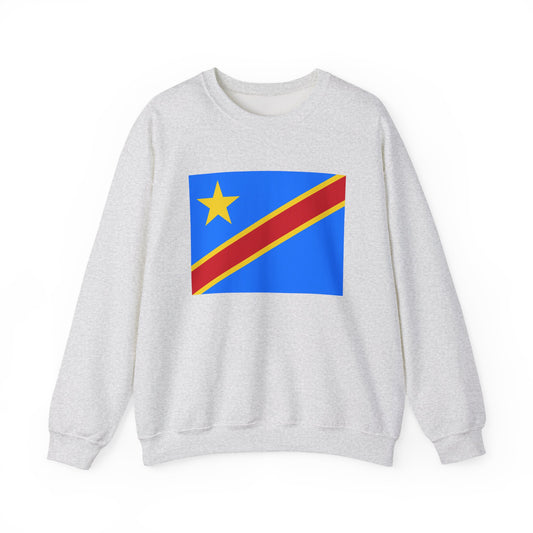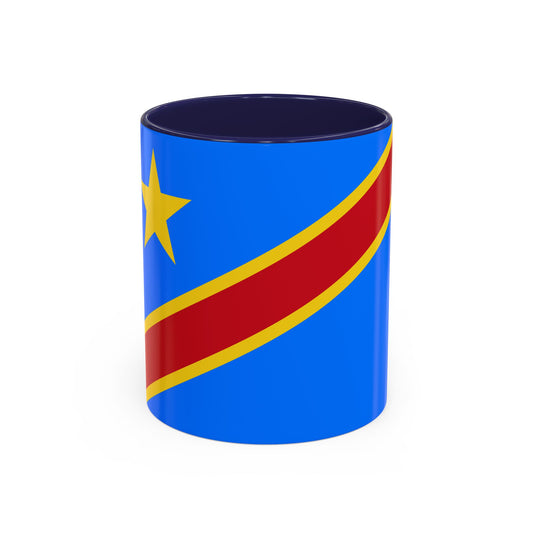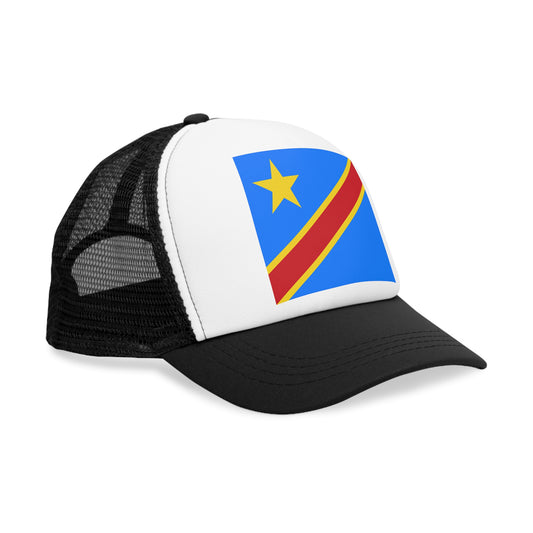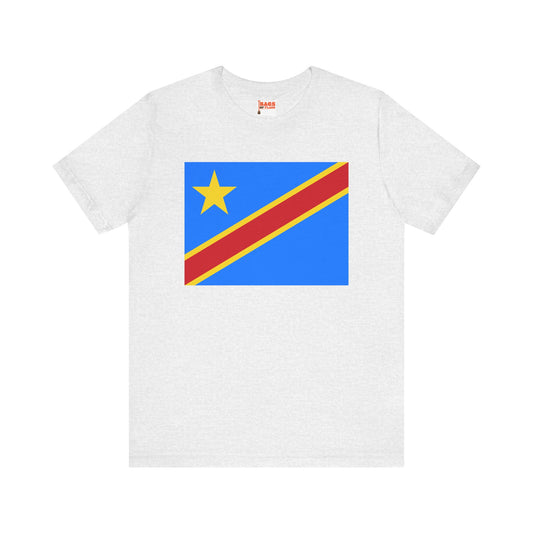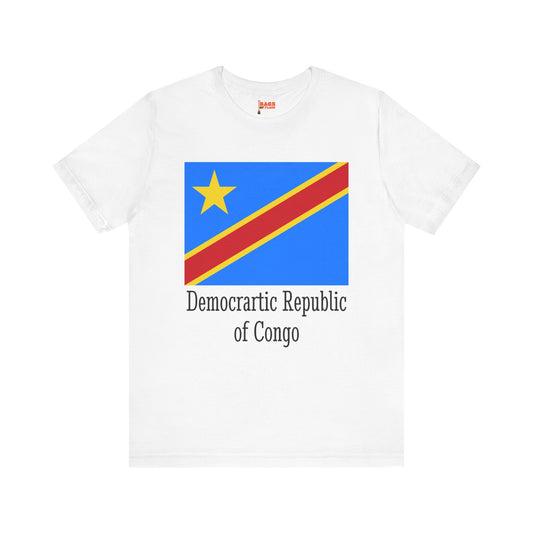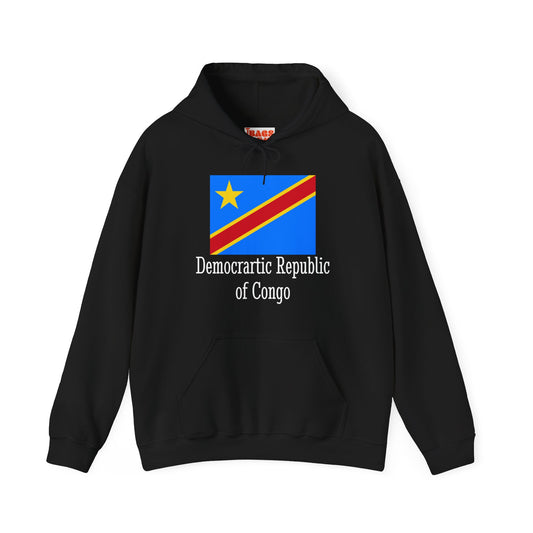-
Democratic Republic of the Congo Pillow
Regular price $22.65 USDRegular priceUnit price / per -
Democratic Republic of the Congo Backpack
Regular price $59.79 USDRegular priceUnit price / per -
Democratic Republic of the Congo Leather Patch Hat
Regular price $18.85 USDRegular priceUnit price / per -
Democratic Republic of the Congo Sweatshirt
Regular price $34.15 USDRegular priceUnit price / per -
Democratic Republic of the Congo Flag Sweatshirt
Regular price $34.15 USDRegular priceUnit price / per -
Democratic Republic of the Congo Mug
Regular price $11.65 USDRegular priceUnit price / per -
Democratic Republic of the Congo Trucker Cap
Regular price $14.90 USDRegular priceUnit price / per -
Democratic Republic of Congo Flag on T-shirt
Regular price $22.79 USDRegular priceUnit price / per -
Democratic Republic of Congo Flag on Hoodie
Regular price $34.40 USDRegular priceUnit price / per -
Democratic Republic of Congo Inspired T-shirt
Regular price $22.79 USDRegular priceUnit price / per -
Democratic Republic of Congo T-shirts
Regular price $22.79 USDRegular priceUnit price / per -
Democratic Republic of Congo Hoodie
Regular price $34.40 USDRegular priceUnit price / per -
Democratic Republic of Congo Hoodies
Regular price $34.40 USDRegular priceUnit price / per
Collection: Congo, Democratic Republic of the
The Democratic Republic of the Congo flag, also known as the DRC flag, is a symbol of pride and identity for the people of this African nation. With a unique design and rich history, the flag is significant in the country's culture and heritage. We will explore the various aspects of the Democratic Republic of the Congo flag, including its design, historical context, symbolism, current relevance, and additional facts and protocols associated with it.
Overview of the Flag's Design and Colors

The flag of the Democratic Republic of the Congo presents a striking and memorable image characterized by a rich palette of colors and a bold diagonal stripe. The flag's background is a vibrant sky blue, stretching a red stripe bordered by thin yellow lines. This stripe begins at the flag's lower hoist-side corner and extends diagonally to the upper fly-side corner, dividing the flag into two unequal halves.
A large yellow five-pointed star sits at the heart of the flag, directly in line with the diagonal stripe. The combination of blue, red, and yellow makes the flag visually distinctive and imbues it with deep symbolic meaning, representing the nation's aspirations, sacrifices, and commitment to peace. This careful selection of colors and the flag's unique design elements reflect the Democratic Republic of the Congo's identity and values, distinguishing it from other national flags.
Historical Context of the Flag
The journey of the Democratic Republic of the Congo's flag to its current design reflects the nation's tumultuous history. The flag we see today, adopted on February 20, 2006, is not the first to represent the country. Since gaining independence from Belgium in 1960, the DRC has seen several flags, each symbolizing different political epochs and aspirations. The original flag, introduced at the moment of independence, bore a close resemblance to the current flag but with significant variations that mirrored the political landscape of the time.
Throughout the years, changes in governance and shifts in national identity prompted alterations to the flag's design. The most notable change occurred during the reign of Mobutu Sese Seko when the country was known as Zaire, and a radically different flag was introduced, reflecting Mobutu's push for Authenticité, distancing the nation from its colonial past. The re-adoption of a flag similar to the original 1960 design in 2006 signified a return to the values and ideals envisioned at the dawn of independence, marking a period of renewed hope and a definitive step away from the country's years under Mobutu's rule.
Symbolism Behind the Flag

The Democratic Republic of the Congo flag is rich with symbolism, reflecting the nation’s values, history, and aspirations. The vibrant sky-blue background symbolizes the peace the nation strives for, embodying the Congolese people's desire for stability amidst periods of turmoil and conflict. The red diagonal stripe is a powerful reminder of the sacrifices made by the nation’s martyrs, representing the blood shed in the pursuit of independence and freedom from colonial rule.
This stripe, cutting across the flag, signifies the challenges the country has faced and continues to confront on its path toward sovereignty and self-determination. At the core of the flag, the yellow star stands as a beacon of hope, illuminating the path toward a brighter future. It symbolizes the country’s rich resources and potential for prosperity, aiming to inspire unity and optimism among the Congolese people. Each element of the flag's design weaves a narrative of resilience, aspiration, and unity, encapsulating the essence of the Democratic Republic of the Congo's national identity.
Current Relevance of the Flag
Today, the Democratic Republic of the Congo flag is a pervasive symbol within the nation, fluttering above government buildings, educational institutions and during significant national holidays. Its presence at military ceremonies is particularly noteworthy, serving as a tribute to the country's armed forces and their role in its history of resilience and struggle for sovereignty. Besides formal state occasions, the flag plays a central role in cultural events and celebrations, where it symbolizes national pride and unity among the diverse ethnic groups that comprise the country's population.
Despite its widespread acceptance and use, the flag has not been immune to criticism and discussions regarding its representation of the Congo's complex identity. Some voices within the country argue for a design that more explicitly reflects the rich cultural diversity of its people, suggesting updates or alterations to the flag that better capture the essence of the nation's heritage and the plurality of its communities. These debates underscore the dynamic nature of national symbols and their capacity to evolve in response to changing societal values and perspectives. The flag remains a focal point of national discourse within these conversations, highlighting its ongoing importance in shaping and expressing the Democratic Republic of the Congo's evolving identity.
Additional Facts and Protocols for the Flag
Regarding the handling and displaying of the Democratic Republic of the Congo flag, several guidelines ensure its respect and proper use. When featured alongside flags from other countries or entities, the DRC flag must occupy the position of highest honor, symbolizing the nation's sovereignty and pride. Observers must demonstrate respect during ceremonial occasions involving the flag, mainly when the national anthem accompanies its raising, by standing attentively.
Care must be taken to prevent the flag from contacting the ground, a practice that embodies respect for the symbol and what it represents. Additionally, using the flag in manners considered disrespectful or for commercial endeavors is strictly discouraged. This includes avoiding using the flag's likeness in apparel or merchandise in specific contexts, as it may dilute its symbolic value and significance. These protocols preserve the flag's dignity and foster a sense of national unity and respect among the Congolese people.






